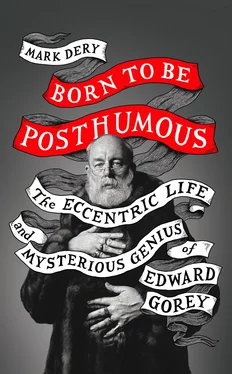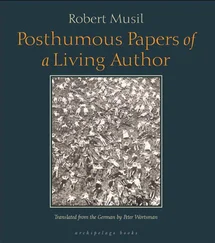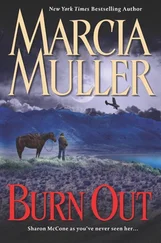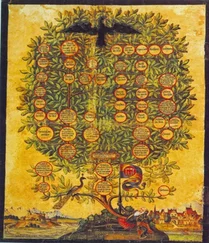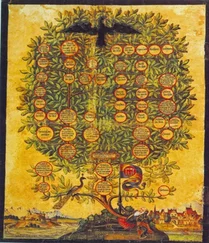In his first month at Harvard, Gorey met a fellow veteran and fledgling poet with whom he soon formed a two-man counterculture. Frank O’Hara, his upstairs neighbor in Mower B-21, would go on to fame as a leading light in the New York School of poets (which included John Ashbery and Kenneth Koch, both Harvardians as well). Brilliant, intellectually combative, lightning quick with a witty comeback, O’Hara was a virtuoso conversationalist who turned cocktail-party repartee into an improvisatory art.
Like Gorey, he’d come to Harvard on the GI Bill. He, too, was Irish Catholic, but whereas Ted had slipped the traces of a Catholic upbringing early on, O’Hara had all the post-traumatic baggage of the lapsed Catholic: “It’s well known that God and I don’t get along together,” he wisecracked in one of his poems. 1But the most obvious evidence that he and Gorey were cast in the same mold was O’Hara’s “drive for knowing about all the arts,” an impulse that “was as tireless as it was unfocused,” according to his biographer Brad Gooch, who adds that “he showed a genius, early on, for being in the know”—another Goreyan quality. 2By 1944, when he enlisted in the navy, he’d become “something of an expert on the latest developments in twentieth-century avant-garde music, art, and literature,” mostly by way of his own auto-didactic curriculum, Gooch writes. 3Like Gorey, O’Hara was fluent in modern art, bristling with opinions on Picasso, Klee, Calder, and Kandinsky. At the same time, he shared Ted’s passion for pop culture, which for O’Hara meant the comic strip Blondie , hit songs by Sinatra and the big-band trumpeter Harry James, and, most of all, film: he was an ardent moviegoer, papering his bedroom walls with pictures of popcorn Venuses like Marlene Dietrich and Rita Hayworth. Insatiable in his cultural cravings, all-embracing in his tastes, unreserved in his opinions, O’Hara was in many ways Gorey’s intellectual double, down to the fanatical balletomania.
The two were soon inseparable. They made a Mutt-and-Jeff pair on campus, O’Hara with his domed forehead and bent, aquiline nose, broken by a childhood bully, walking on his toes and stretching his neck to add an inch or two to his five-foot-seven height, Gorey towering over him at six two, “tall and spooky looking,” in the words of a schoolmate. 4
Swanning around campus in his signature getup of sneakers and a long canvas coat with a sheepskin collar, fingers heavy with rings, Gorey was the odds-on favorite for campus bohemian, with the emphasis on odd. “I remember the first day Ted Gorey came into the dining hall I thought he was the oddest person I’d ever seen,” said George Montgomery. “He seemed very, very tall, with his hair plastered down across the front like bangs, like a Roman emperor. He was wearing rings on his fingers.” 5Larry Osgood, a year behind Ted, shared Montgomery’s double-take reaction the first time he saw Gorey. He was standing in line to buy a ticket to a performance by the Martha Graham Company when he noticed a “tall, willowy man” with his nose in a little book. 6“Ted never stood in line for anything without a book in his hands,” says Osgood. “One of the things that struck me about him and made me, in my philistine way, sort of giggle at him was [that] one of his little fingernails was about three inches long. He’d let it grow and grow and grow.”
Gorey struck an effete pose. He affected a world-weariness and tossed off deadpan pronouncements with a knowing tone, an irony he underscored with broad, be-still-my-heart gestures—“all the flapping around he did,” a fellow dorm resident called it. 7Even so, he wasn’t some shrieking caricature of pre-Stonewall queerness. “He was flamboyant in a much more witty and bizarre way that normal queens weren’t,” says Osgood. “Giving big parties and carrying on, listening to records of musicals and singing along to them” wasn’t Gorey’s style.
As always, Gorey defied binaries. His eccentric appearance belied a shy, reserved nature. His speech, body language, and cultural passions—theater, ballet, the novels of gay satirists of mores and manners such as Saki, Ronald Firbank, E. F. Benson, and Ivy Compton-Burnett—were a catalog of stereotypically gay traits and affinities. Yet no one in the almost exclusively gay crowd he traveled with ever saw him at gay bars such as the Napoleon Club or the Silver Dollar. He was either so discreet that he eluded detection or, as he later maintained, so yawningly uninterested in sex that there was nothing to detect.
O’Hara was impressed by Gorey’s assured sense of himself, his refusal to apologize for his deviations from the norm, especially his blithe disregard for conventional notions of masculinity. O’Hara, who’d had his first same-sex experience when he was sixteen, was conflicted about his sexual identity—all too aware of his attraction to men but gnawed by the suspicion that gay men were sissies and haunted by fears of what would happen if his secret got out in the conservative Irish Catholic community where he’d grown up, in Grafton, Massachusetts. Posthumously, O’Hara would take his place on the Mount Rushmore of gay letters, but during his Harvard years he was torn between the closeted life he was forced to live whenever he returned home and the more liberated life he lived at Harvard and in Boston’s gay underground.
Gorey’s comparatively over-the-top persona was a revelation to O’Hara. “As his life in [his hometown] became more weighted and conflicted, O’Hara compensated by growing increasingly flamboyant at Harvard,” writes Gooch. “His main accomplice in this flowering was Edward St. John Gorey,” who constituted O’Hara’s “first serious brush with a high style and an offbeat elegance to which he quickly succumbed.” 8
Style is key here: consciously or not, Gorey was acting out a “revolt through style,” a phrase coined by cultural critics to describe the symbolic rebellion, staged in music, slang, and fashion, by postwar subcultures—mods, punks, goths, and all the rest of them. Gorey wasn’t so much rebelling against the conformist, compulsorily straight America of the late ’40s as he was airily disregarding it, decamping to a place more congenial to his sensibility, a world concocted from his far-flung fascinations and conjured up in India ink.
Growing up, Gorey and O’Hara had always been the smartest kids in any room they walked into. Now each had met his match, not just in IQ points but in cultural omnivorousness, creativity, and oblique wit. They fed off each other’s enthusiasms, seeing foreign films at the Kenmore, near Boston University; sneaking into the ballet during intermission at the old Boston Opera House, on Huntington Avenue; and attending poetry readings on campus given by Wallace Stevens, W. H. Auden, Edith Sitwell, and Dylan Thomas. Poking around in bookstores near Harvard Square, they initiated one another into the esoteric charms of writers sunk in obscurity.
Ronald Firbank (1886–1926), a little-known English novelist of the ’20s, was typical of their rarefied tastes. If Gorey and O’Hara’s aesthetic cult had a patron saint, it was Firbank, whose influence on both men lasted long after Harvard. O’Hara’s wordplay, his ironic humor, and his witty interpolation, in his poems, of snippets of overheard dialogue owe much to Firbank. As for Gorey, he once cited the author as “the greatest influence on me … because he is so concise and so madly oblique,” though he later qualified his admiration, conceding that he was “reluctant to admit” his debt to Firbank “because I’ve outgrown him in one way, though in another I don’t suppose I ever will. Firbank’s subject matter isn’t very congenial to me—the ecclesiastical frou-frou, the adolescent sexual innuendo. But the way he wrote things, the very elliptical structure, influenced me a great deal.” 9(Gorey repaid the debt in 1971 when he illustrated a limited edition of Two Early Stories by Firbank.) 10He also took from Firbank what he took from Japanese and Chinese literature, namely, the aesthetic of “leaving things out, being very brief,” to achieve an almost haikulike narrative compression. 11(“I think nothing,” Firbank declared, “of filing fifty pages down to make a brief, crisp paragraph, or even a row of dots.”) 12
Читать дальше
